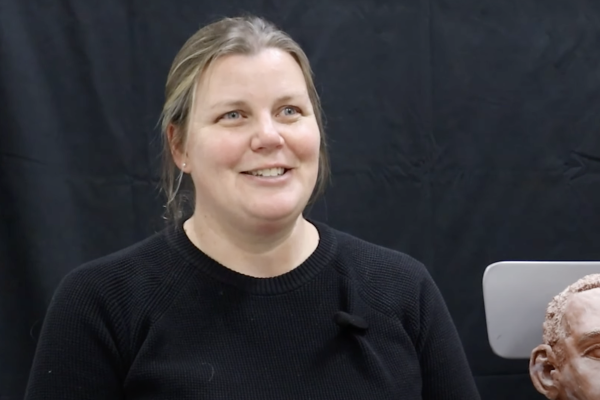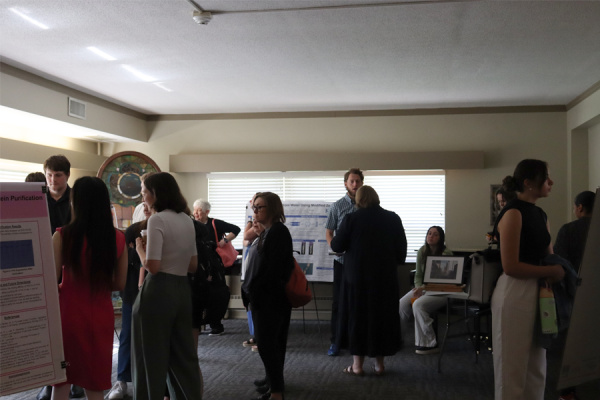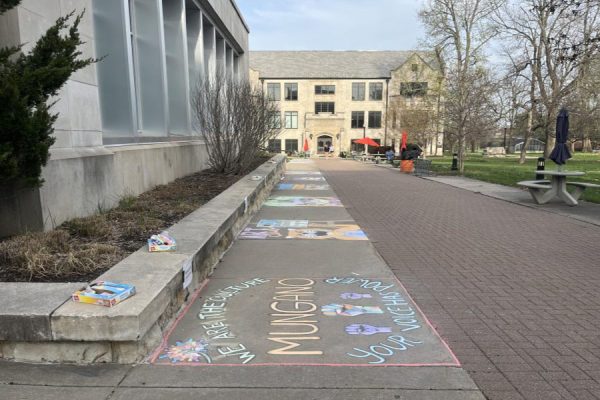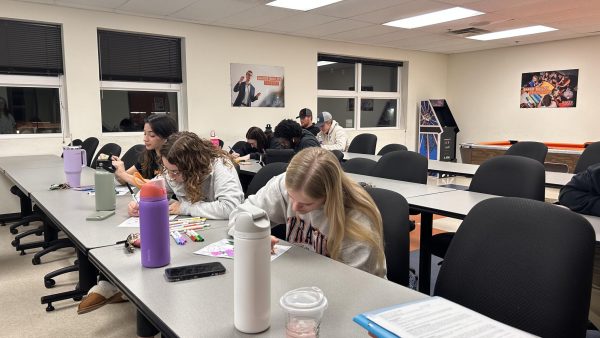Advocate speaks to class about life as transgender

The light blue, light pink and white flag represents being transgender.
Baker’s Principles of Sociology and Social Inequality students had the opportunity to hear from Kinsey Institute global ambassador Jessica Lynn about her life as a transgender woman on March 19.
Lynn, born Jeffrey Alan Butterworth, began her presentation by speaking about the statistics involving the transgender community. Only 1.4 million, or 0.6 percent, of adults, identify as transgender — a term used to describe a person whose gender identity does not correspond with their assigned gender at birth.
Lynn explained that a person begins showing signs of gender identity at a very young age. This occurred for Lynn around age four when she started wanting to play with girls toys and wear dresses.
For a person whose physical traits do not match who they feel they are inside, this situation can be very troubling. Lynn said that she moved from activity to activity as a young boy in order to distract herself from the constant torment. Because of this, she became very good at painting and enjoyed collecting a variety of objects, but her main forte was soccer. Lynn had four full-ride college scholarship offers as well as an offer to join the 1984 Olympic team.
However, even with activities as distractions, many transgender people who are struggling internally end up attempting to take their own lives. Four-and-a-half percent of the U.S. population has attempted suicide, compared to a staggering 42 percent of the transgender population who have attempted suicide.
In addition to internal struggles, the transgender community faces high levels of discrimination, violence and bullying. Much of this can be attributed to the lack of legislation for the transgender community regarding non-discrimination policies. Furthermore, the laws that are in place for the transgender community vary from state to state.
“[The most difficult part for me was that] I just wanted to be a mother, have a husband and have female parts,” Lynn said.
After facing many obstacles, including the deaths of loved ones and family troubles, Lynn finally had gender reassignment surgery at the age of 45 in September 2010. This surgery was completed by Dr. Marci Bowers, one of the most highly regarded physicians for the transgender community.
“[My main motivation for having the surgery was the fact that] I did not feel right in my own body,” Lynn said.
Although Lynn’s parents were aware of their child’s gender identity struggles at a young age, they were encouraged by psychologist and sexologist Dr. John Money, whom Lynn was taken to see by her parents at age five, to utilize the nature vs. nurture mentality. The idea was to force the “bad” thoughts out of Lynn’s head and get her to conform to behavior more typical of a young boy by immersing her in the male culture typical of her age group.
Lynn explained that the mentality Money encouraged clients to use for their child was much more of a social experiment rather than a correct medical practice. Despite this, Lynn fully came out to her parents in her mid 20’s.
Students found Lynn’s presentation intriguing because of the vast number of injustices she faced.
“The fact that the analyst in her custody case said she was a great parent, yet the judge refused to let her have contact with her son in any way and even went so far as to remove her name from her son’s birth certificate was a discriminatory atrocity,” freshman Brett Baker said. “I hope that no such injustices are allowed to continue in America because of a person’s race, gender, sexuality or anything else. When it comes down to it, we are all human.”
Lynn wrapped up her presentation by explaining the Butterfly Effect, which is a theory that suggests that small changes in thought and action can lead to larger changes in thinking and acting in a new way as well as the importance of speaking about social issues and injustices.
“[In order to expand appreciation and acceptance of the transgender community] it is important for the message to be spread so that understanding increases,” Lynn said.

Elizabeth is a senior from Leawood. She is a public relations and spanish double-major and has a minor in english. Elizabeth is involved in Delta Delta...











